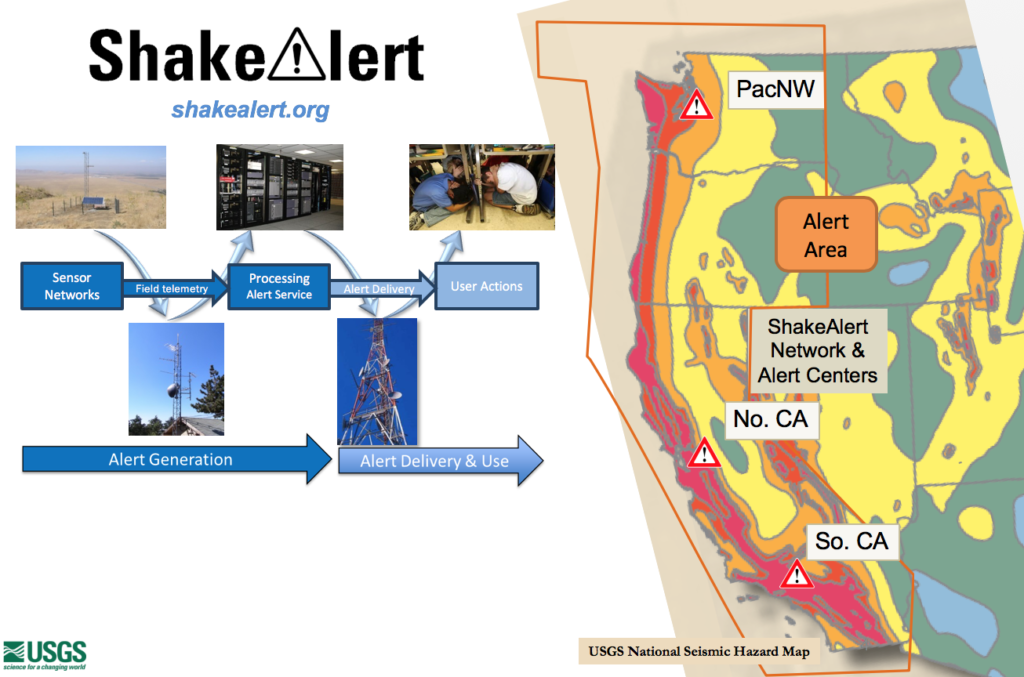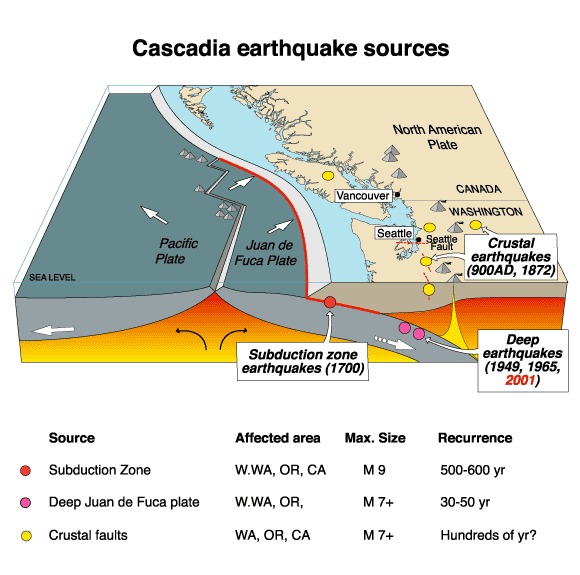
By SAM STITES/Oregon Capital Bureau
SALEM — Oregon would prepare 250,000 households to become self-sufficient following a catastrophic earthquake under legislation advancing in Salem. The legislation, Senate Bill 1537, also would double the number of monitors that would alert Oregon coast and in the Willamette Valley residents to an earthquake.
The proposals are the latest effort to prepare Oregonians for what scientists say is inevitable – a destructive earthquake in the Cascadia Subduction Zone that would destroy buildings, roads and more.

Some $3 million is being requested by Gov. Kate Brown to fund “Two-week Ready Oregon” within the state Office of Emergency Management. The program would be administered by the Oregon Military Department and aims to give 250,000 Oregon households the supplies and expertise to be self-sufficient for two weeks following a natural disaster. That means having enough food, water, first-aid supplies and other emergency items to keep a household functioning for two weeks.
The legislation, pending before the Legislature’s budget committee, would build out Oregon’s ShakeAlert system, a network of seismic monitoring stations administered by the U.S. Geological Survey along the Pacific Coast.

The network extends from northern California to British Columbia and feeds into similar programs at CalTech, the University of California, Berkeley, and University of Washington.
ShakeAlert monitors seismic activity and allows the Geological Survey to alert counties, cities, utility companies and others before shaking from an earthquake begins. It gives people time to methodically take shelter rather than scrambling in a panic. It also allows utilities to take precautions and shut down critical infrastructure that could be damaged by shaking. Part of the system is already operating in southern California.
Brown had $12 million in her proposed 2019-21 budget to finish the rest of Oregon’s ShakeAlert system and begin setting up a similar program to alert agencies and the public to wildfires. But Oregon lawmakers cut all that money in the last days of the 2019 Legislature. Since then, the U.S. Geological Survey awarded $1.6 million to the University of Oregon and $11 million to six other universities to continue work on the monitoring program.
Under the latest proposal, $7.5 million would be allocated the network, which currently has around 120 sensors located across the Willamette Valley and Oregon coast. Real-time public warnings from ShakeAlert for Oregon will begin when 75 percent of the planned 240 seismic stations in the state are operating, hopefully by 2023. It now is at 60 percent.

A team from the University of Oregon would install and monitor the stations. Eight UO staff now install new stations in the field and monitor activity. The team has recently installed six monitors on Central Lincoln People’s Utility District property along the central coast. There has been a monitor in Yachats for several years.
One of those on the team is Doug Toomey, a seismologist and geophysicist and one of the pioneers of in the use of ocean-bottom seismology.
“One of the remarkable aspects about the project is how collaborative and well distributed it has been over its development,” Toomey said. “The University of Oregon actually has one of the stronger seismology departments on the West Coast with five active seismologists.”
According to Toomey, the benefit of ShakeAlert is its impact on protecting public safety not only in Oregon, but along the entire earthquake zone.
“If you think of the impacts we have locally in terms of helping people and helping a water utility save water by shutting off valves, that’s multiplied by many hundreds along the West Coast,” he said. “Funding from the state is critical not only just for Oregon, but our performance within ShakeAlert impacts the resiliency of California, Washington and British Columbia.”
Also packed within the bill are provisions that would review dam safety across the state and update the state’s resilience plan.



